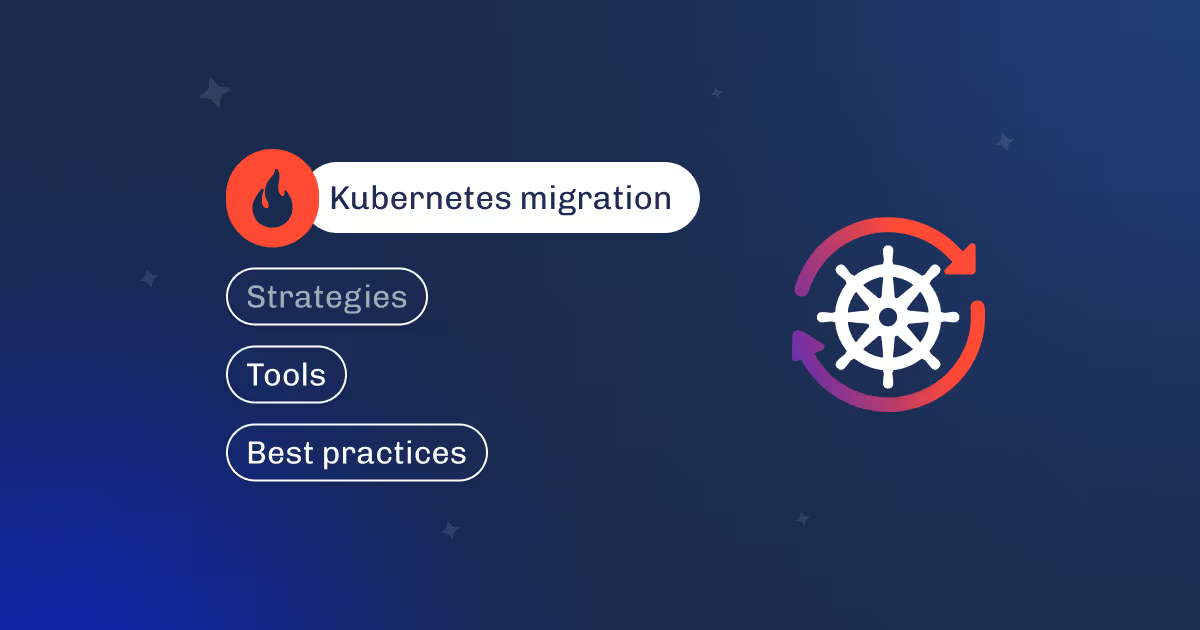

Behind every AI breakthrough—whether it’s detecting tumors, recommending your next favorite show, or powering autonomous vehicles—there’s something invisible making it all possible: machine learning infrastructure.
Most people focus on the models, algorithms, and predictions. But it’s the infrastructure that decides whether those models can scale. Whether experiments take hours or days. Whether your team can move fast without breaking things.
ML infrastructure is the power grid, the plumbing, and the scaffolding behind every AI system. It’s not flashy. But without it, nothing runs.
And today, as AI becomes critical across industries—from fintech to healthcare—reliable, secure, and scalable ML infra has become a competitive advantage, not just a technical concern.
In this article, we’ll break down what ML infrastructure actually is, why it matters, and how to build systems that support real-world AI—stable, flexible, and production-ready.

Machine learning infrastructure is the technical foundation that supports the entire ML lifecycle—from data ingestion to model training, evaluation, deployment, and monitoring. It’s the combination of hardware, software, tools, and workflows that make building, running, and scaling ML systems possible.
At its core, ML infrastructure answers a simple question: how do we turn raw data and experiments into reliable, production-grade AI?
To do that, your infrastructure must handle several key responsibilities:
ML starts with data—and lots of it. Your infrastructure needs to store structured and unstructured data securely, ensure version control, and allow fast access during training and inference. Whether you're dealing with petabytes in object storage (like S3) or feature stores for real-time pipelines, this layer is foundational.
Training modern ML models is compute-intensive. Infrastructure must support dynamic allocation of CPUs, GPUs, and even TPUs, whether on-premises or in the cloud. It should also support autoscaling, distributed training, and task orchestration. Tools like Kubernetes, Ray, or Slurm often sit at this layer.
ML workflows are iterative by nature. Engineers need to run dozens or hundreds of experiments, track metrics, tweak hyperparameters, and compare results. Infrastructure must support versioning not only of models, but also datasets, configurations, and code. Tools like MLflow, Weights & Biases, and DVC play a key role here.

Once a model is ready, it has to be deployed reliably—whether as a batch job, real-time API, or edge deployment. ML infrastructure must support containerization, CI/CD pipelines, A/B testing, model registries, and rollback mechanisms. This is where MLOps principles truly come into play.
Even the best-trained models can drift or degrade in production. Infrastructure must include tools for monitoring predictions, detecting data drift, logging anomalies, and alerting teams. Without this, production ML becomes a black box.
In enterprise settings, AI systems often touch sensitive data or make high-stakes decisions. Infrastructure must support access control, encryption, audit trails, and compliance with standards like GDPR or HIPAA. This is especially critical in healthcare, finance, and government applications.
Designing machine learning infrastructure isn’t something you do once and forget. It grows with your team. It shifts as data volumes increase. It adapts to new tools, use cases, and the pressure of real-world deployment.
Some teams begin with a single training script on a laptop. Others inherit a patchwork of cloud services and cron jobs. But no matter the starting point, the goal is the same: create a reliable, flexible system where experiments can thrive and models can move smoothly into production.
Infrastructure must be tailored to the specific needs of your ML projects. Are you training large deep learning models or running lightweight models in real-time? Are workloads batch-based, streaming, or hybrid?
Defining these use cases early helps determine your stack—from hardware accelerators to data pipelines to orchestration tools. For instance, a computer vision startup might prioritize GPU clusters and high-throughput image storage, while a fraud detection system may require low-latency feature stores and real-time model serving.
One of the first strategic decisions is where to run your ML workloads. Options include:
Each approach affects how you architect networking, data access, compute orchestration, and security.

Without a good data infrastructure, your models are flying blind. Development must include:
This layer should support reproducibility and data lineage, so you can trace exactly what data was used for each model.
ML infrastructure must scale horizontally and manage complex, multi-step pipelines. Key components include:
You want to go from “training a model on a local notebook” to “running distributed training jobs on demand” without friction.
This is where researchers and engineers interact daily. A robust experimentation layer includes:
Your infra should make it easy to run 100+ experiments without chaos or duplication.
Deploying ML models isn’t just DevOps—it’s MLOps. You’ll need:
Think of this as the equivalent of site reliability engineering (SRE), but for models.
As teams grow, ML infrastructure must support:
Without this, velocity slows and risks multiply as more people interact with the system.
Especially in regulated industries, your infra must be secure by design:
Security isn’t a nice-to-have—it’s baked into every layer of infrastructure development.
The quality of your machine learning infrastructure directly shapes the quality of your results. It’s the silent force behind faster experiments, cleaner handoffs, and models that keep working long after deployment.
When infrastructure is treated as an afterthought, everything suffers:
On the other hand, a thoughtful ML infra setup helps your team move with clarity and confidence—knowing that training, serving, monitoring, and iterating are all supported by reliable systems.
Here’s how good vs bad infrastructure plays out in practice:
| Area | Poor Infrastructure | Well-Designed Infrastructure |
|---|---|---|
| Experiment Tracking | Metrics scattered across notebooks or lost entirely | Centralized, versioned, and queryable experiment logs |
| Deployment | Manual, error-prone, hard to reproduce | Automated CI/CD with rollback, staging, and version control |
| Scalability | Bottlenecks, manual scaling, limited resources | Elastic compute, autoscaling, efficient resource allocation |
| Reproducibility | "It worked on my machine" chaos | Full lineage: data, config, code, and model version traceability |
| Collaboration | Silos, inconsistent environments | Shared platforms, standardized workflows |
| Monitoring | No alerts or drift detection | Real-time metrics, anomaly alerts, model health dashboards |
| Compliance & Audit | Manual logs, limited access control | Automated audit trails, RBAC, secure data handling |
%201.avif)
The chart illustrates the rapid global growth of the AI infrastructure market—set to multiply several times by 2030. It highlights a clear trend: companies are investing not just in machine learning models, but in the robust infrastructure needed to support them at scale and in production.
Many teams start with ready-made platforms—SageMaker, Vertex AI, Databricks. And for early-stage experimentation, these tools work well. But once models grow, data pipelines sprawl, and production traffic becomes real, the cracks start to show.
That’s when off-the-shelf solutions stop being enough—and custom ML infrastructure becomes a necessity.
Even the most advanced managed services can feel limiting when:
At this point, you're not just training models—you’re orchestrating a distributed, performance-critical system. And cookie-cutter tools won’t cut it.
Let’s look at real-world cases where ML infrastructure—or the lack of it—became the deciding factor between failure and scale.
Zillow’s “Zestimate” model, meant to predict home prices, was at the heart of their buying/selling business. But the model failed catastrophically in production—leading to losses of over $500M and the shutdown of their iBuying arm.
What went wrong?
Zillow lacked robust infrastructure for:
Lesson: Even accurate models can fail without observability and infrastructure to validate and control their outputs.
Booking.com ran an A/B test with a new ML-powered ranking algorithm. The model worked well in offline tests but underperformed in production.
Why?
Their initial deployment stack didn’t replicate real-time data latency and traffic patterns seen in production. The model was starved for fresh signals.
Lesson: ML infra isn’t just about compute—it must mirror production behavior during testing or offline evaluation becomes meaningless.
Netflix faced scale challenges running hundreds of ML experiments across teams. Instead of scaling manually, they built their own platform called Metaflow, combining versioning, scheduling, and experiment tracking.
Impact:
Lesson: Custom ML infrastructure can be a force multiplier when it’s built around actual team workflows and pain points.
At Dysnix, we’ve seen it all—models that break silently in production, pipelines held together by duct tape, and teams drowning in technical debt just to get a single model into production. That’s why we don’t just “set up tools.” We design robust ML infrastructure systems tailored to real-world conditions.
We start by understanding your data flows, model types, business logic, and risk tolerance. Are you retraining daily? Is inference latency critical? Do you need to run hybrid workloads across cloud and on-prem? These answers shape everything.
We don’t push a standard stack—we architect around the operational reality of your team.
We build infrastructure in modular layers that integrate cleanly:
Each part is replaceable, extensible, and built for scale without lock-in.
Infrastructure should not be a black box.
We implement:
Your team gains transparency and control, not just compute power.
Great ML infrastructure isn’t just scalable—it’s usable. We design systems where:
We build shared workspaces, collaborative dashboards, and role-specific workflows. The result? A platform that amplifies your team, not slows them down.
Your needs will change. That’s why we embed flexibility from day one.
We help you evolve your infrastructure as:
And we stay with you—offering long-term support, upgrades, and architecture reviews to prevent stagnation and scale sustainably.
ML infrastructure goes far beyond uptime or automation. It’s the backbone that keeps your AI stable, transparent, and scalable—no matter how fast your needs evolve.
If you're tired of platform limits, tangled pipelines, and infrastructure that can’t keep up—we're here to help.
Let’s talk about what your next-gen ML system could look like.






